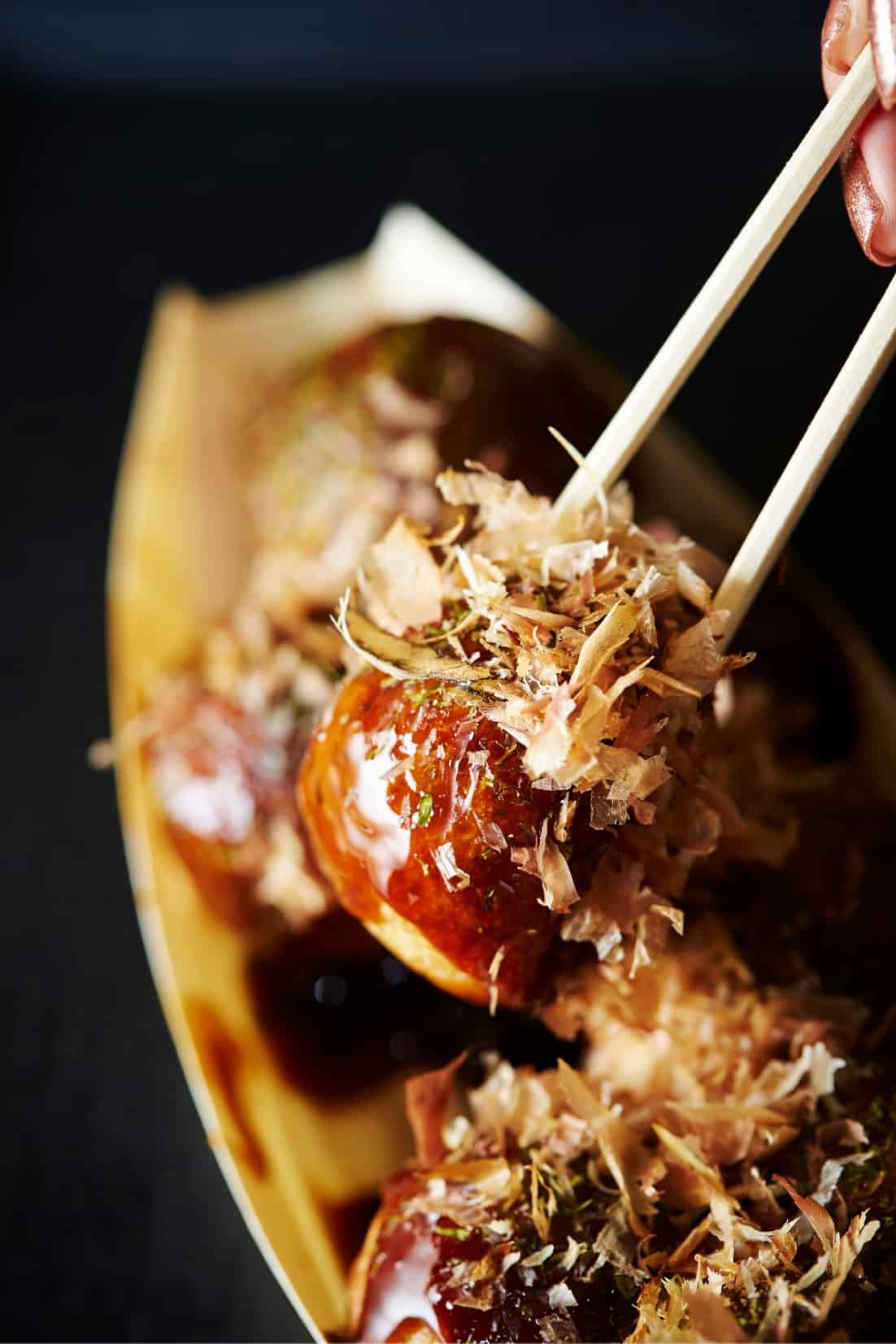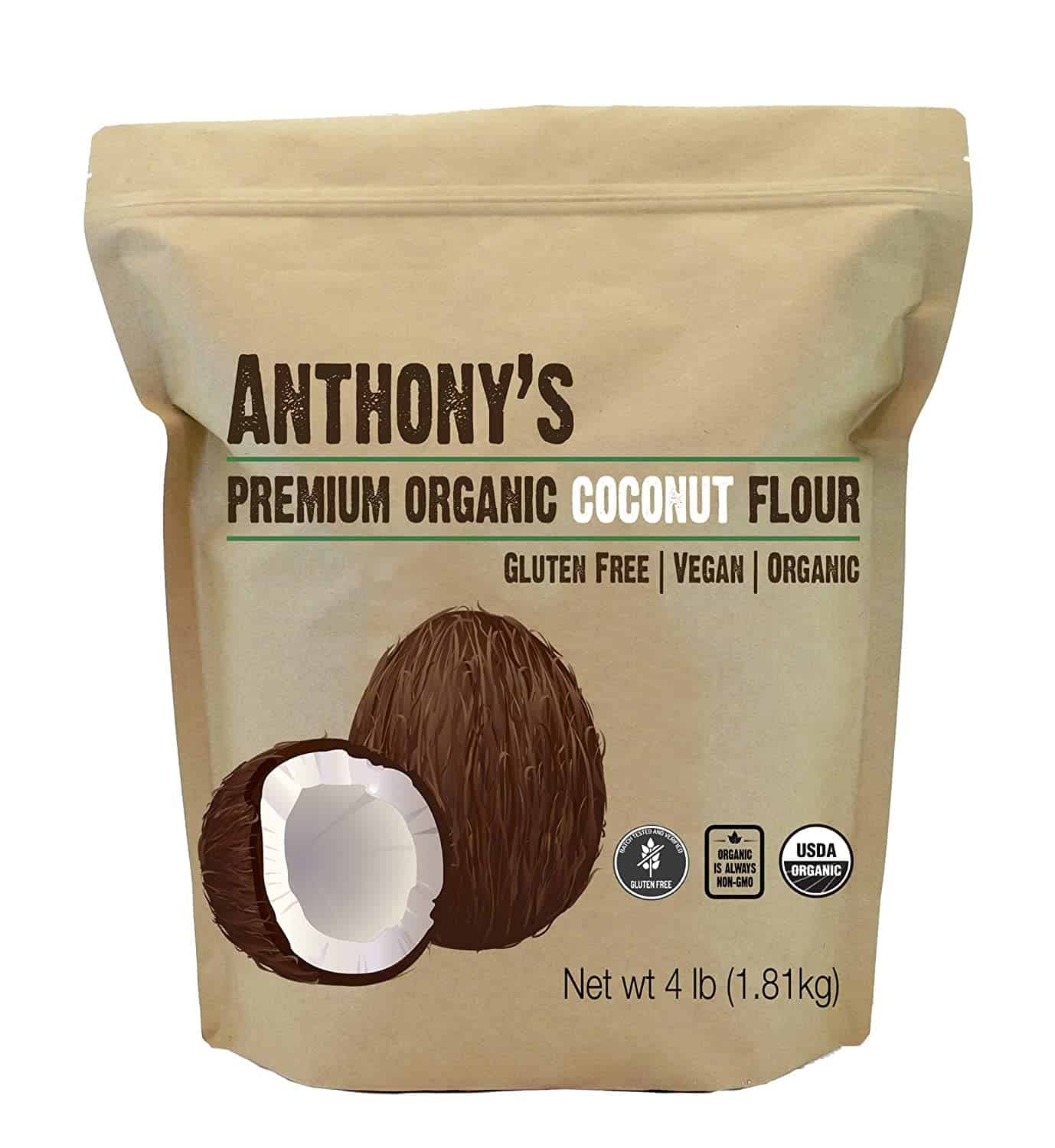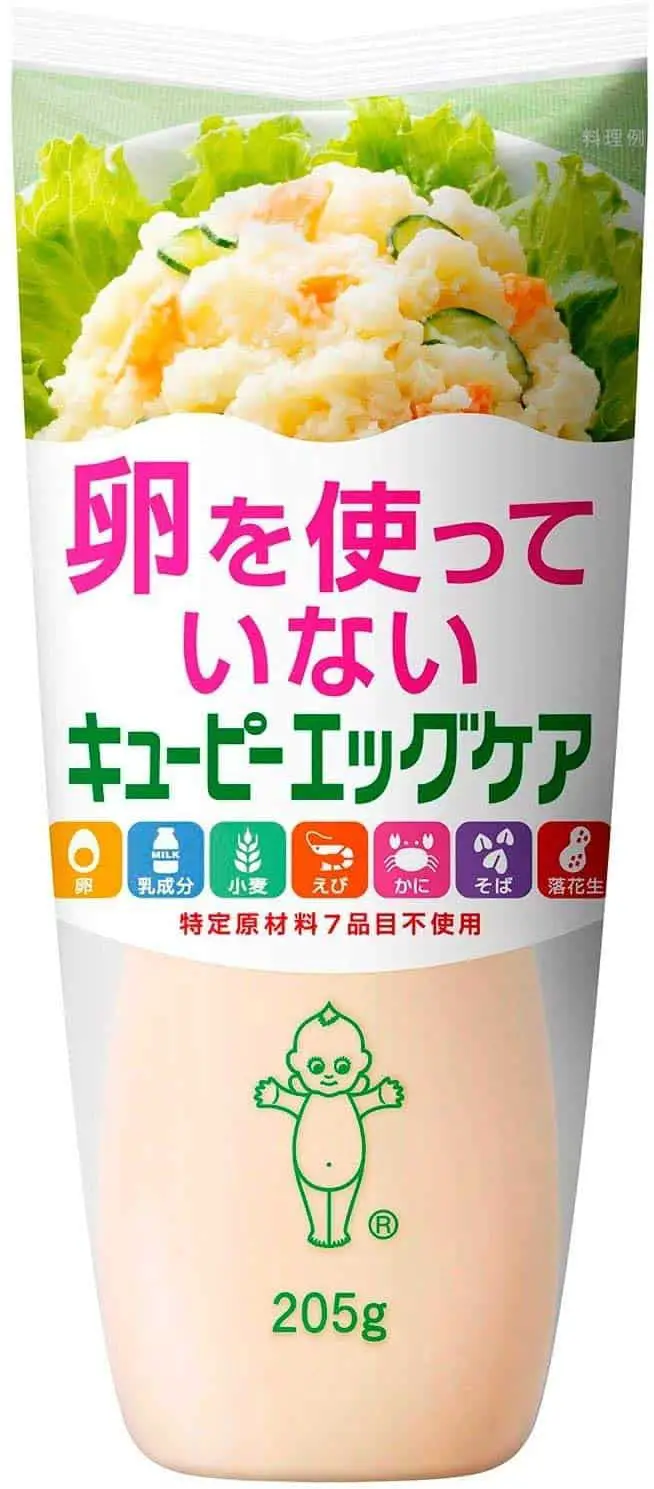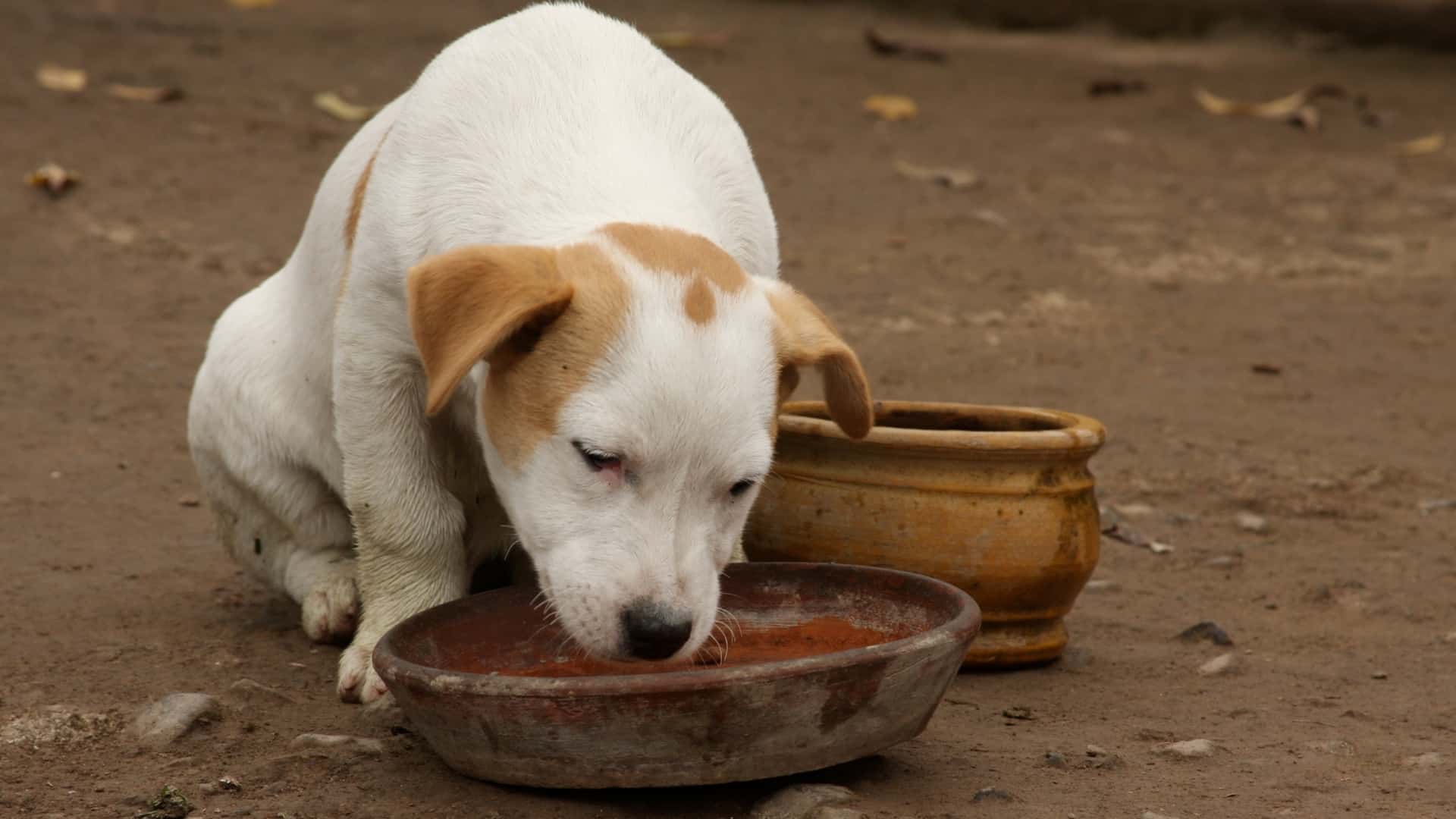Is Takoyaki Healthy? Not really no, but this is what you can do
Oh man, I like takoyaki and have talked about it a few times before already.
First, I tried it because I just had to know what the octopus balls would taste like, and since they have grown on me.
But are they healthy? Let’s find out.

A few years ago, Takoyaki spread across the Kanto region in Japan, and it began being sold in little convenience stores and restaurants.
It has since hit the shores of the US, and it’s now spreading like wildfire in the states.
Takoyaki, or “octopus balls”, are not an especially healthy snack compared to other snacks. They are generally high in carbs and deep-fried, causing a dual dietary dilemma for healthy eaters. Once they have been fried they are then covered in a sauce that combines high-calorie mayonnaise topped with okonomiyaki sauce.
So let’s take a closer look at this delicious street food.
I hope you have the time to check out my video where I talk about the information in this post, I’ve had fun making it and there are a few surprises in there as well :)
Of course, you can read on or skip to any part of the article using the navigation.

Check out our new cookbook
Bitemybun's family recipes with complete meal planner and recipe guide.
Try it out for free with Kindle Unlimited:
Read for freeIn this post we'll cover:
Okonomiyaki or takoyaki sauce
Okonomiyaki sauce is a mixture of oyster sauce, ketchup, sugar (or honey), and Worcestershire sauce.
The sauce is a blend of salty and sweet and when mixed with the fresh oceanic taste of the golden crunchy orbs of the Takoyaki, an explosion of flavor will delight your taste buds.

But with all the sugar, batter, and deep-frying, it’s just not all that healthy.
How many calories are in takoyaki?
Just one Takoyaki ball with sauce has about 80 calories, consisting of 4.2 grams of carbs, 2.4 grams of protein, and 5.8 grams of fats. If you buy takoyaki to go in a container or order at a restaurant, you usually get 6 in a serving so that amounts to 480 calories.
Can you make takoyaki healthier?
So, how do you get your takoyaki without suffering a carb overload? Simple, you just take away the wheat flour.
Reducing carbs in takoyaki
Did you know that replacing only the regular flour with coconut flour will turn a carb crazy recipe into a plethora of healthy goodness?
Keto-friendly and low-carb recipes for Takoyaki are comparable to the traditional Japanese recipes and you don’t have to give away a lot of taste points to make them a healthier option.
These bags from Anthony’s are among the most popular wheat flour substitutes:

Air Fryer vs Pan Fried
While pan-frying in oil or deep frying in your fry daddy, may taste deliciously decadent, the trade-off could yield disastrous health consequences. Allow the sauce to add moisture, not the oil.
Frying Takoyaki in the air fryer will still give you the crispy crunch that you desire and at the same time, it will give your cholesterol numbers a break.
It does get a bit messy, but think of how much more energy you will have because you chose the healthier option and aren’t feeling that greasy grumpiness that comes after you eat fried foods.
Can you do without the takoyaki sauce?
The sauce, though sweet, gathers its flavor from the honey and the oyster sauce. As sugar goes, these are some of the healthier options so you don’t really need to alter the sauce recipe, except to not use white sugar.
Using a low fat, vegan (like this Yuzu vegan kewpie) or fat-free mayonnaise will ensure that you are able to slather your Takoyaki in the delicious sauce and mayo guilt-free.

Can you do without the octopus meat?
The octopus meat is the healthiest part of the dish. Takoyaki can be made with other types of meat or even no meat if you’re not a fan of octopus or are not a meat-eater.

Anything from the traditional meats of the area such as shrimp, fish, and octopus, to less traditional more Americanized meats like pork, beef, and chicken, can be used for the dish.
There are even recipes out there for vegan Takoyaki using Tofu in place of the meat.
So if you think you would not enjoy the octopus or it is unavailable in your area, try substituting your favorite meat or vegetables even.
Is takoyaki halal?
While some might be able to answer that question off the bat, it will be a source of confusion for others.
Questions such as what is Takoyaki? and what is halal? are just a few that will flood the mind.
Well, not to worry. This article will answer all of those questions. Let’s answer it real quick and then I’ll dive into why:
Takoyaki is halal when properly prepared. The ingredients in these octopus balls are all “permissible to eat” and as long as the chef sticks to the proper ways of cleaning and preparing there should be absolutely no issue there.
When you are done reading it, you will feel well educated in all culinary matters concerning Takoyaki and halal foods.
What is Halal?
Halal is an Arabic word that means ‘permissible to eat’. It refers to the dietary standards that are recommended in the Qur’an or Muslim scripture.
In general, foods are considered halal as long as they meet two basic requirements:
- They are free from components Muslims are prohibited from eating according to Islamic law.
- They are produced using utensils, equipment, or machinery that have not been cleaned in a way that is not acceptable according to Islamic law.
As that is still pretty vague, let us give you a rundown of some foods that are not acceptable:
- Alcoholic drinks and intoxicants
- Non-Halal animal fat
- Enzymes other than microbial enzymes
- Gelatine other than fish gelatine
- L-cysteine (an amino acid) sourced from human hair
- Lard
- Animal lipase (an enzyme that catalyzes the hydrolysis of fat)
- Pork, ham, bacon and any sort of pig meat
- Unspecified meat broth
- Rennet (a complex enzyme produced in the stomach of certain animals) that is not plant-based or microbial
- Stock Tallow (a fatty substance rendered from animal fat) not sourced from halal species
- Carnivorous animals
- Foods contaminated with any of the products above
In general, Muslims eat to maintain a strong physique which they feel supports a strong mind.
They do eat meat but they believe that the animals must be killed in the name of God.
The name of God must be spoken as the animal is being killed and the animal’s life must be taken in a manner that is as humane as possible as prescribed in the teachings of halal.
Can I eat takoyaki when eating halal?
At this point, you may still be wondering if Takoyaki is halal.
None of the ingredients seem to be on the ‘do not eat list’, but I’m sure there are certain things on that list you have never heard of.
You may also be wondering if octopus falls into any of those categories or whether the equipment used to prepare Takoyaki has been cleansed according to Islamic law.
Well, while that’s always questionable, overall, yes Takoyaki is halal. It does not contain any of the ingredients on the do not eat list.
Furthermore, we found it recommended in this Halal guide.
So, if you are trying to follow a halal diet, and you come across a street vendor serving these delicious Takoyaki snacks, go ahead and take a bite.
Can dogs eat takoyaki?
Is Takoyaki Dog Safe?
If you’re a household that has a deep love for dogs and Japanese cuisine, you might be curious about whether you can share some of that delicious food with your furry pet friend.
Today we’re discussing whether Takoyaki, or octopus balls, a popular Japanese street food snack, is safe for your dog to consume.

Now, if you’re sneaky little doggo has made their way to your Takoyaki and has gulped down a few, it shouldn’t do them too much harm, however, you should not actively be feeding Takoyaki to your dog.
Many ingredients that make the tasty snack are not compatible with your dog’s digestive system and could cause them some serious distress. Let’s take a look and some of these ingredients and why they may be harmful to your dog.
Harmful takoyaki ingredients to your dog
Salt
Having foods with a lot of salt can dehydrate your dog and make them incredibly thirsty. It can also lead to sodium ion poisoning.
Takoyaki may not necessarily strike you as a ‘salty’ food, however, you must remember that there will be salt in the batter, and in the filling, and most importantly the topping sauces.
Whether you choose to top your Takoyaki with teriyaki sauce, Japanese BBQ sauce, or Takoyaki sauce, these sauces have a lot of salt in them, especially if they are made with soy sauce.
Additionally, the dashi stock used to make Takoyaki batter may not be salty but has a high level of sodium inosinate.
Onions/Garlic
There’s a good chance there will be onions or garlic in your Takoyaki as they form the base of basically all cooking of all time.
Additionally, spring onions are (one of) the most popular toppings or filling found in Takoyaki. While they make everything delicious, unfortunately, they aren’t dog friendly at all.
Consuming onions or garlic, whether raw, cooked, powdered, or in any other form, kills red blood cells and can lead to anemia. An overdose of onions or garlic could even poison your dog.
Fat
It’s no secret that Takoyaki, being a fried snack, requires a generous amount of oil to make. While that makes it delicious for humans, unfortunately, it makes Takoyaki quite dangerous and toxic for dogs. Fatty and oily foods can cause your dog’s pancreas to inflame.
This pushes the organ to produce enzymes that are incredibly damaging to its intestines, a condition that can be life-threatening.
Here’s the deal, individually, a little bit of onion or fried chicken, or a salty snack won’t harm your dog, but the problem here is that Takoyaki combines all these things that aren’t good for your pet into one big treat. One Takoyaki ball might not matter, but a large amount can be devastating.
So, weighing the pros and cons, wouldn’t it just be better to not feed your dog Takoyaki at all? That means there’s more for you!
Warning Signs
Say you’ve fed your dog some Takoyaki, or the sneaky little bugger ate them right off your plate before you could stop them. What should you do? What are the warning signs? If you are worried about your pet, keep a close eye on them and look out for any signs of:
- vomiting
- diarrhea
- fever
- breathing problems
- any other odd or unusual behavior
If you notice any of these symptoms or other questionable behavior, it is best to take them straight to your local vet or emergency clinic.
In these types of emergencies, it is also best to have your local animal poison control center number on hand.
They can better assess the emergency and inform you on what to do next.
Conclusion
As with any new fad, takoyaki is under a microscope and people all across the web are busy “fixing” the recipes and testing out new cooking methods to suit their wants and needs.
And you can make it a bit healthier with the right ingredients and mindset.
A quick online search brought up over a thousand different recipes for Takoyaki. I am sure there is a recipe waiting just for you and it is just a click away.
Bon Appetit.
Also read: this is how you make a traditional takoyaki recipe
Check out our new cookbook
Bitemybun's family recipes with complete meal planner and recipe guide.
Try it out for free with Kindle Unlimited:
Read for freeJoost Nusselder, the founder of Bite My Bun is a content marketer, dad and loves trying out new food with Japanese food at the heart of his passion, and together with his team he's been creating in-depth blog articles since 2016 to help loyal readers with recipes and cooking tips.
